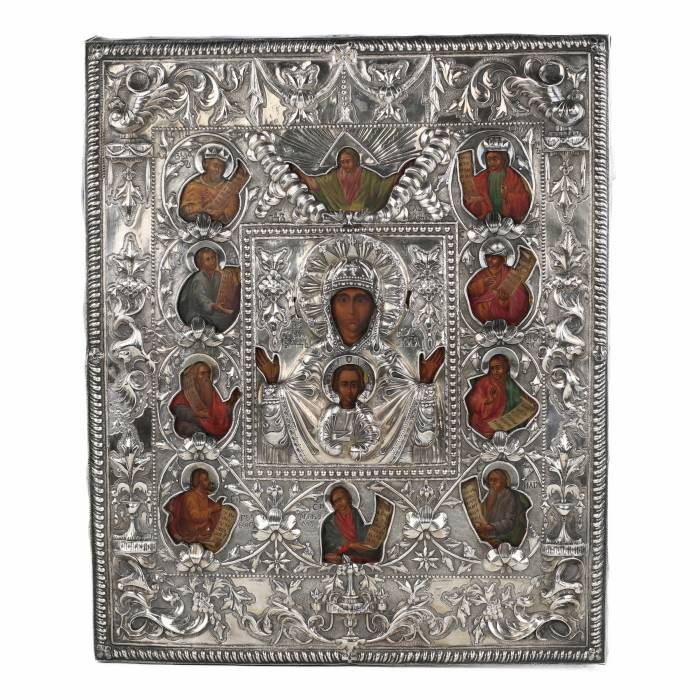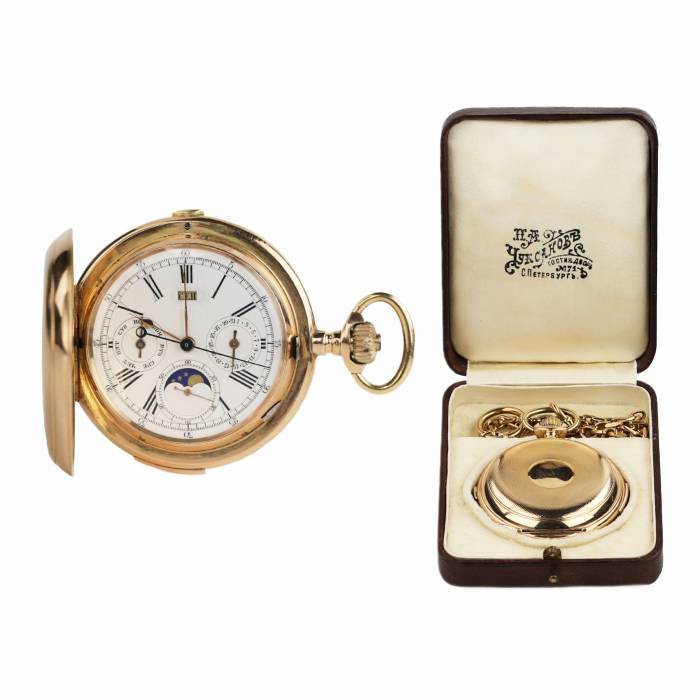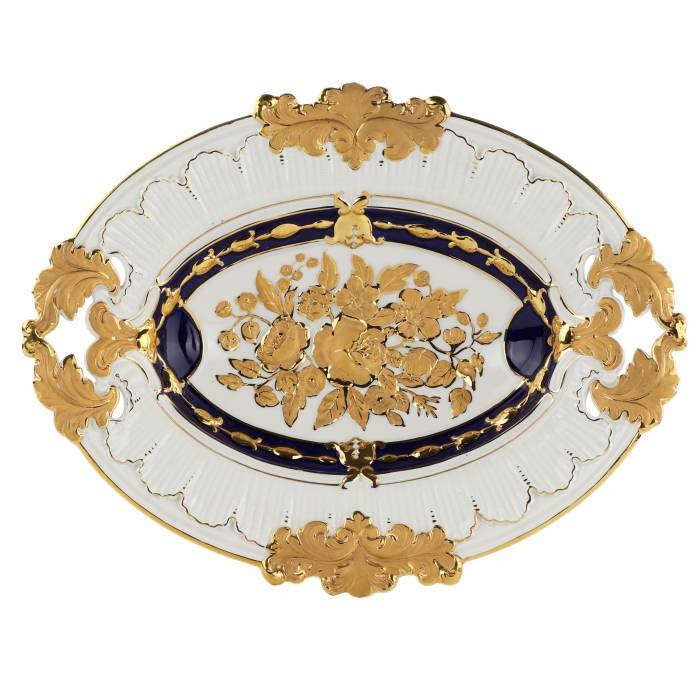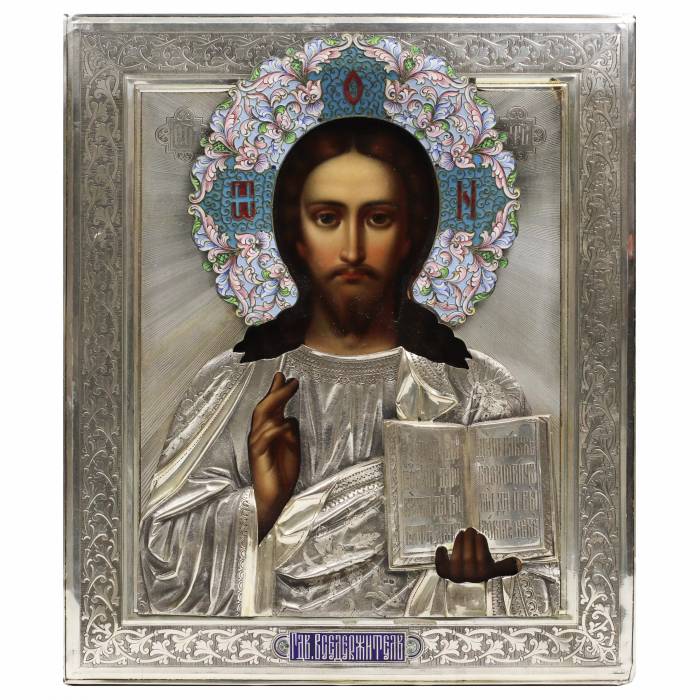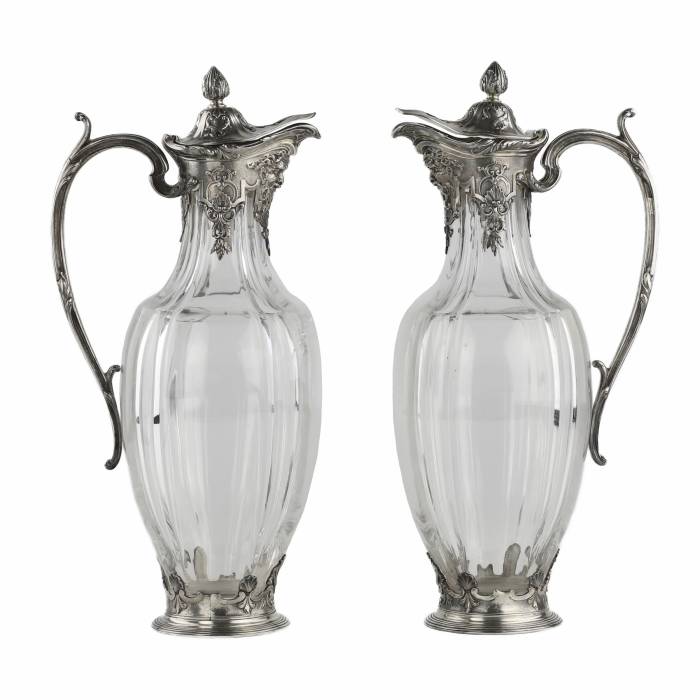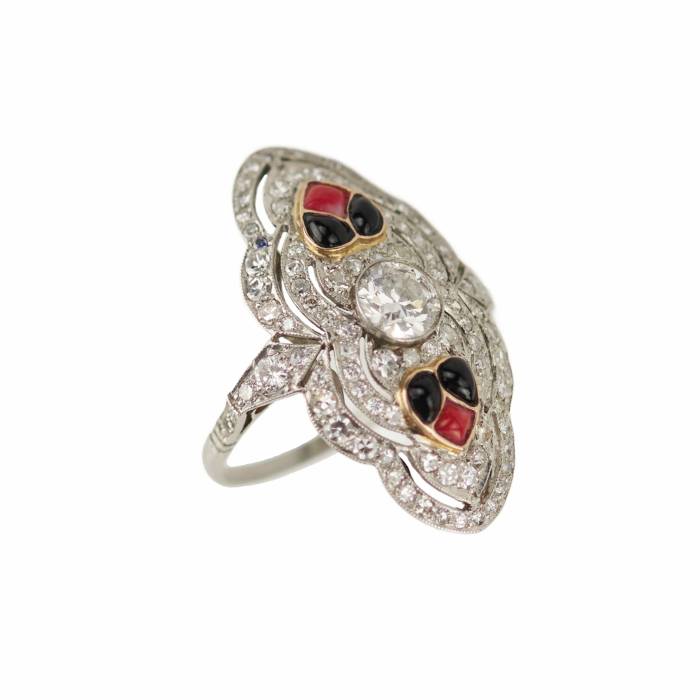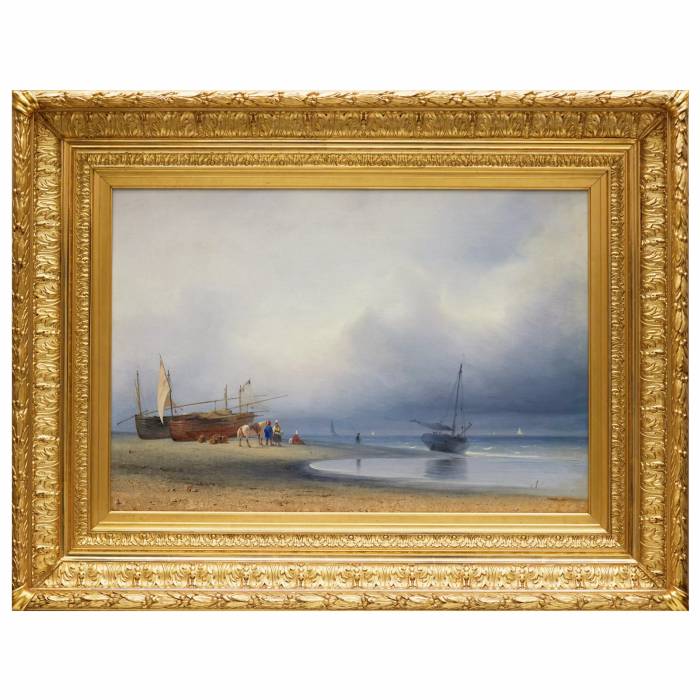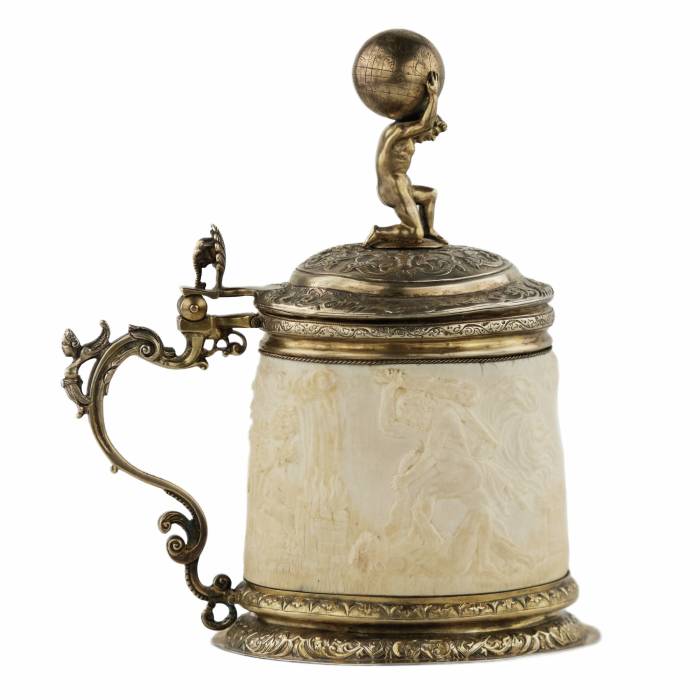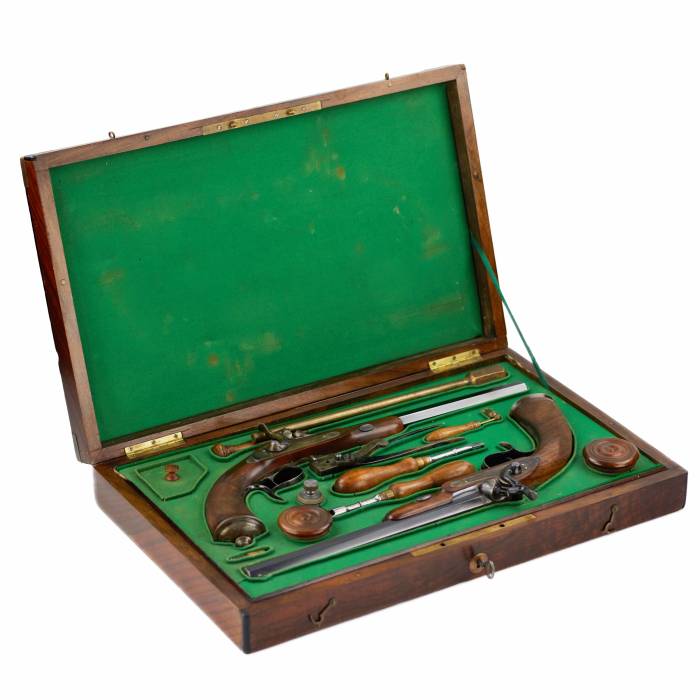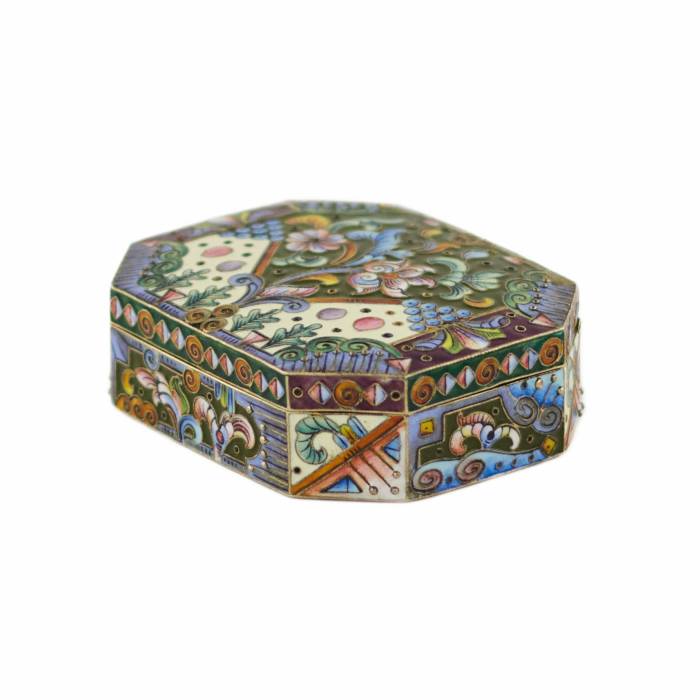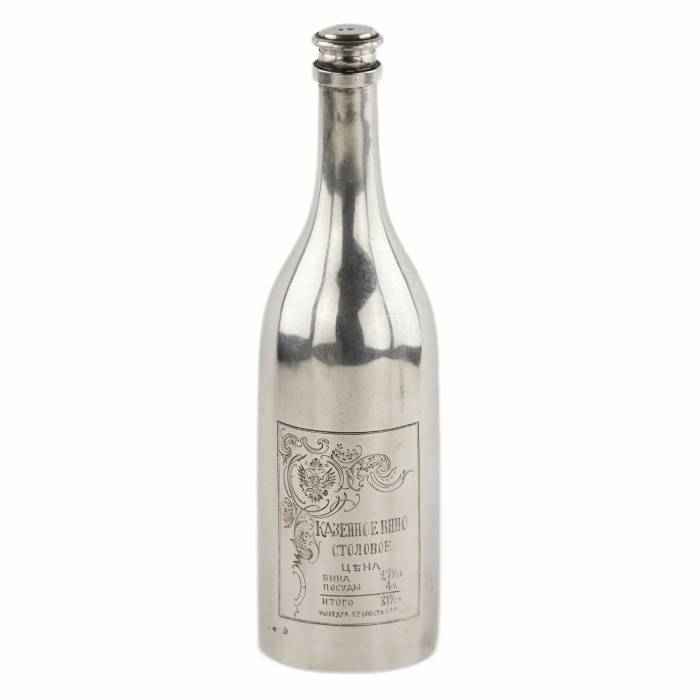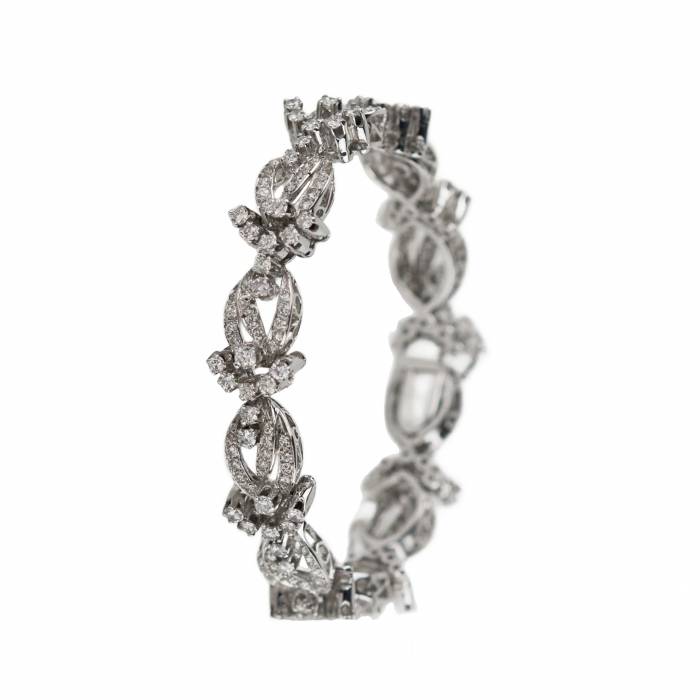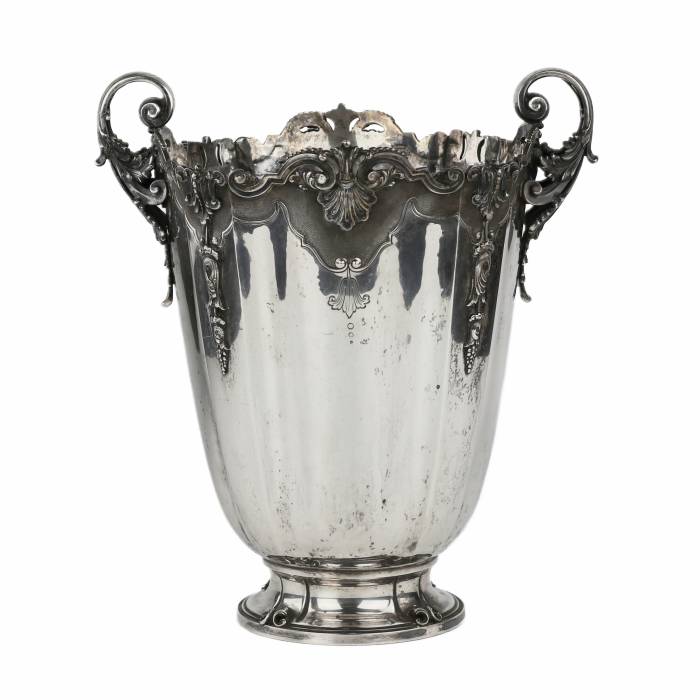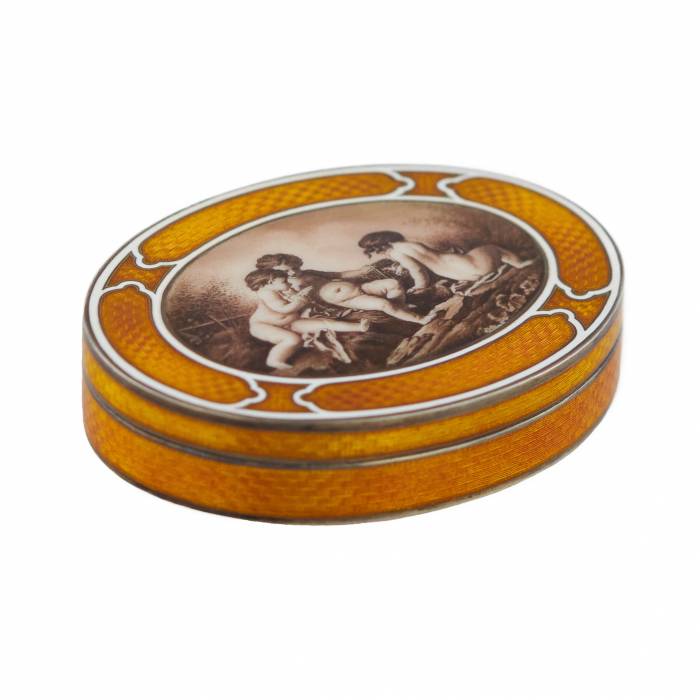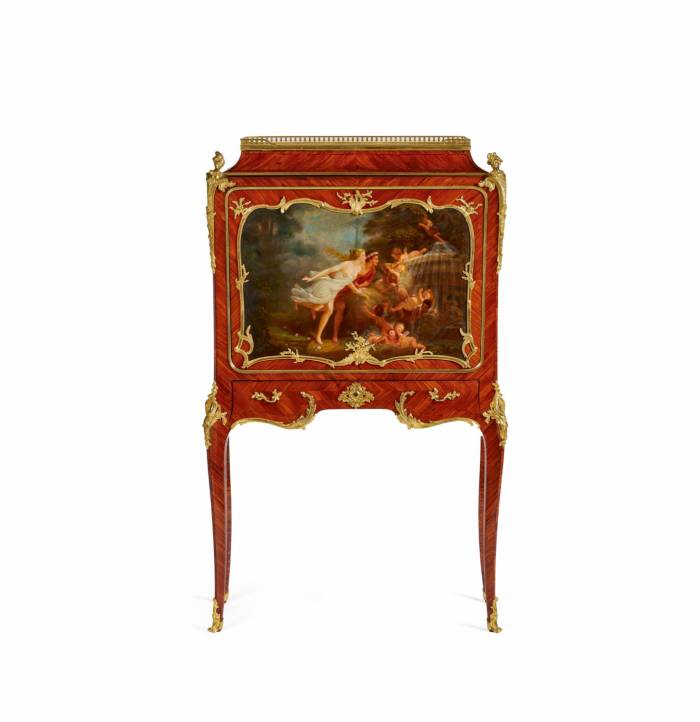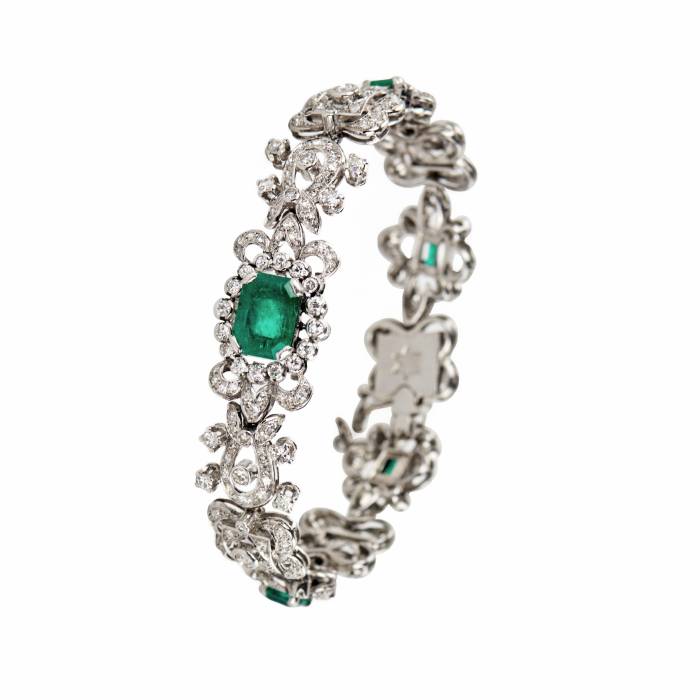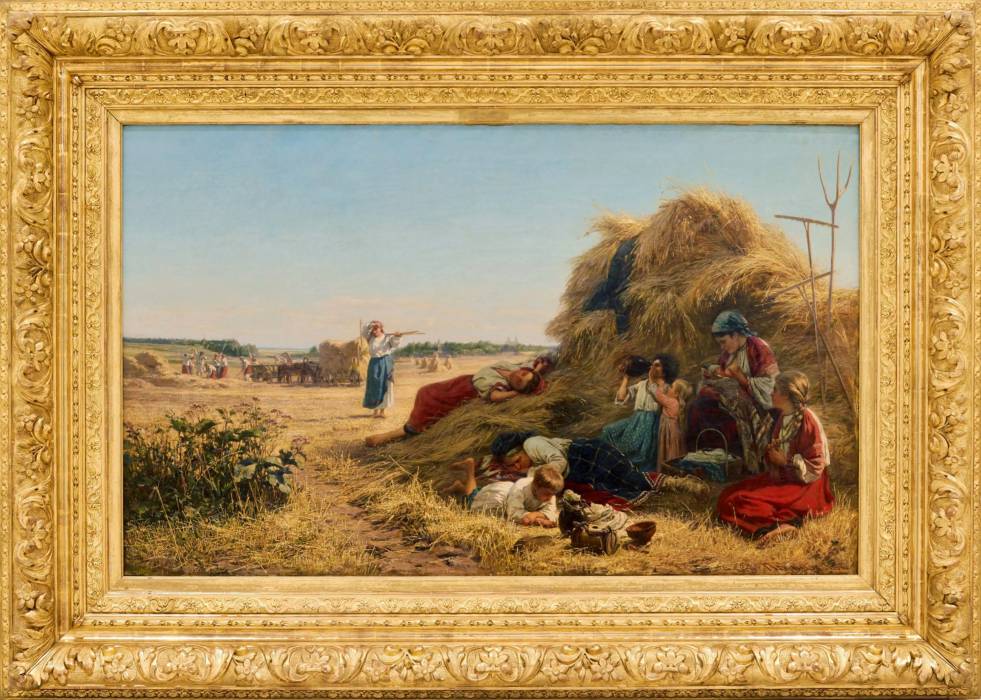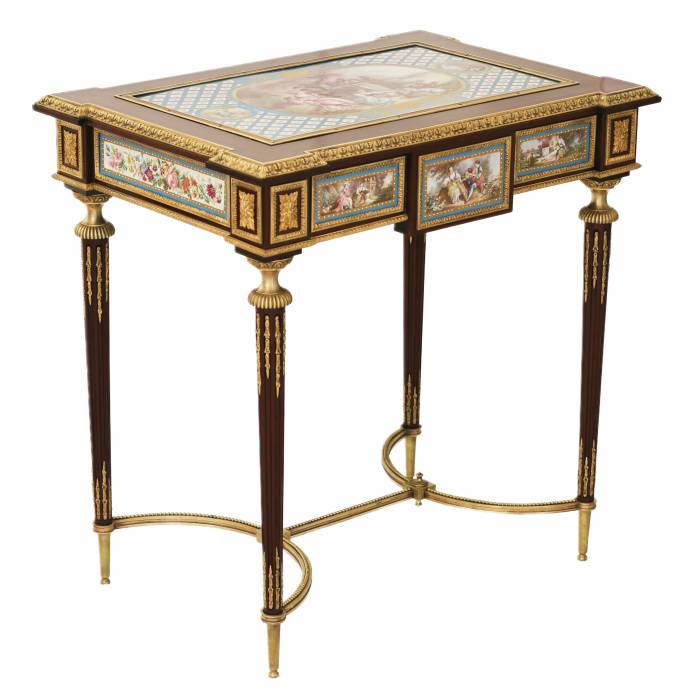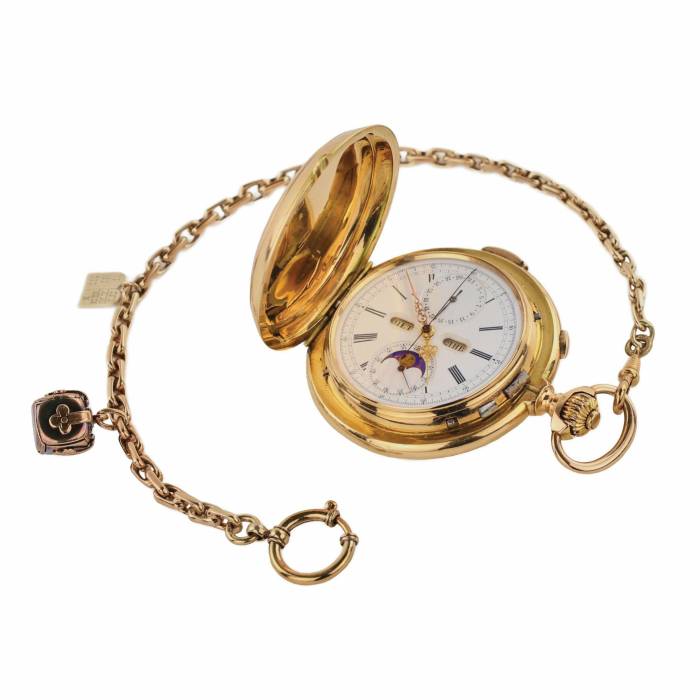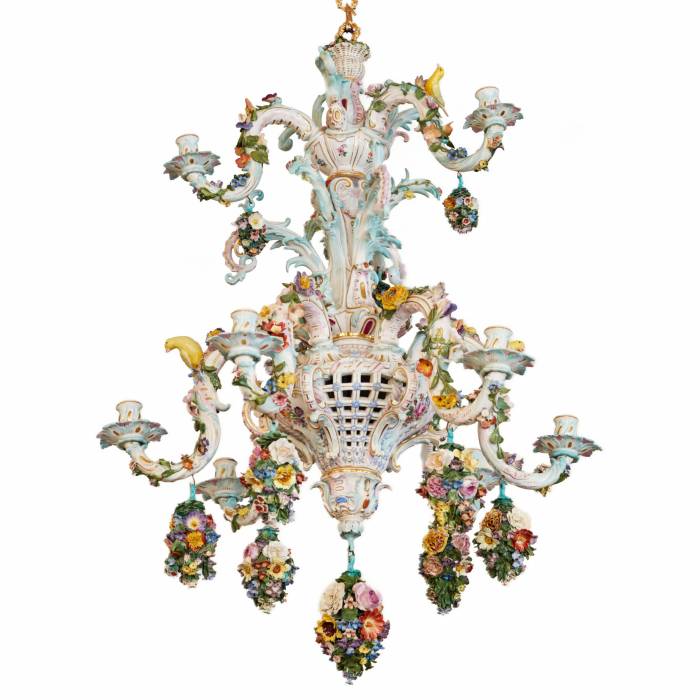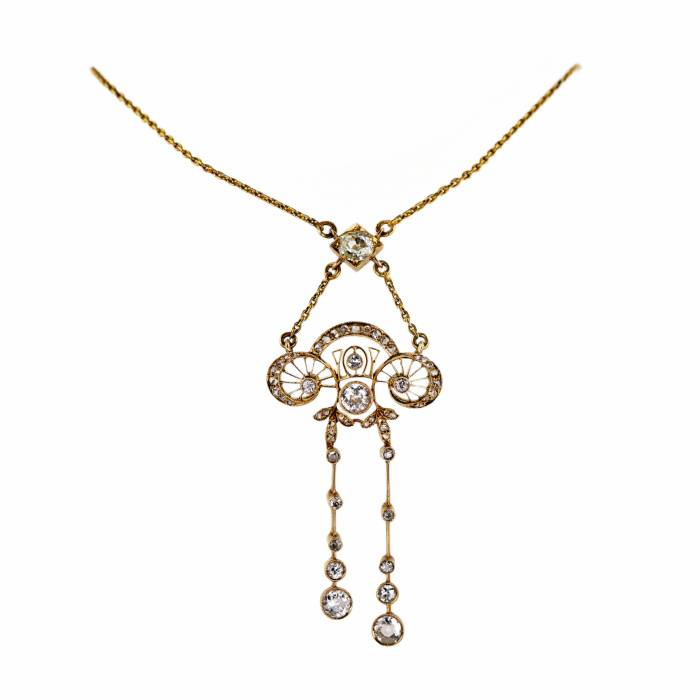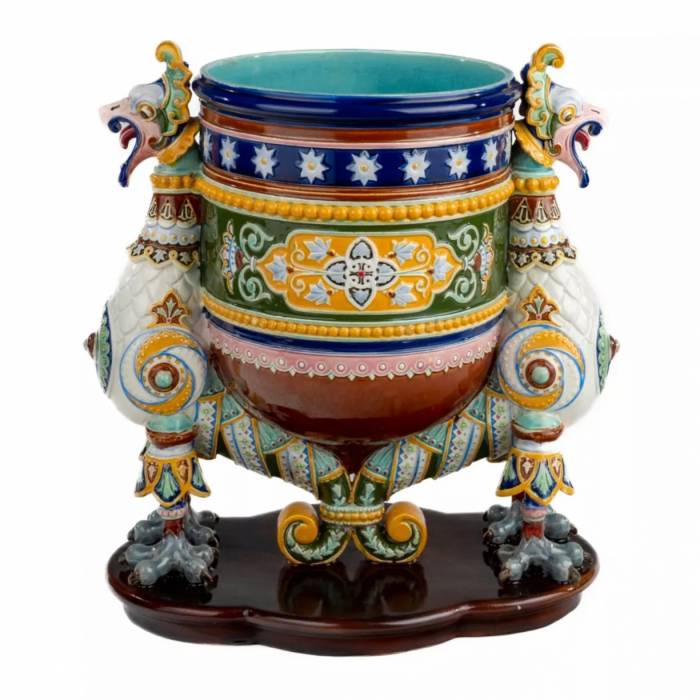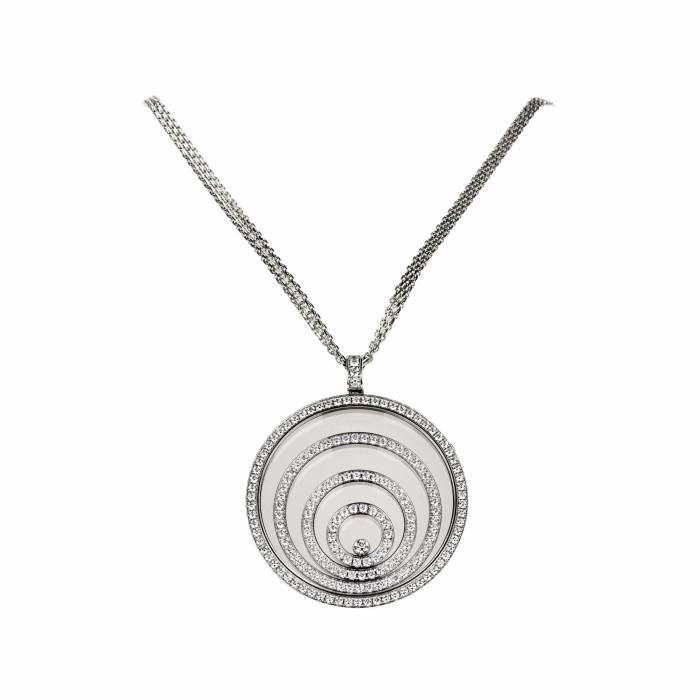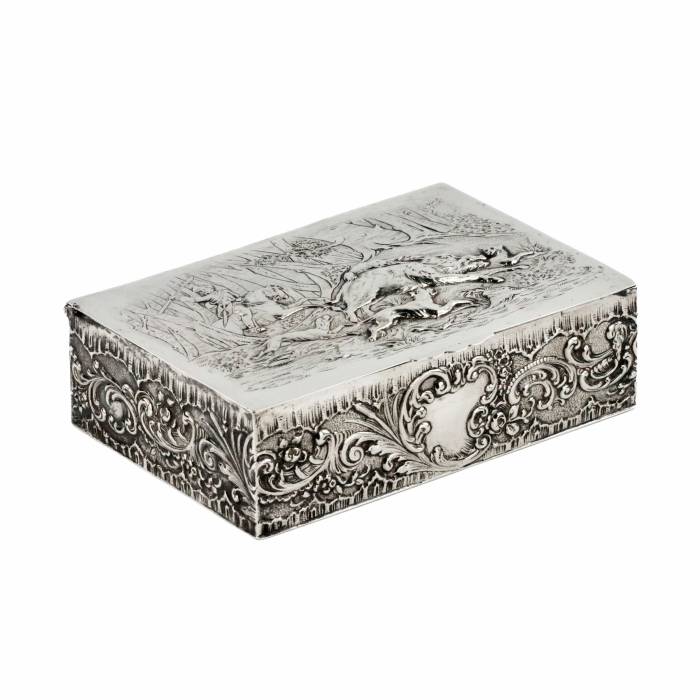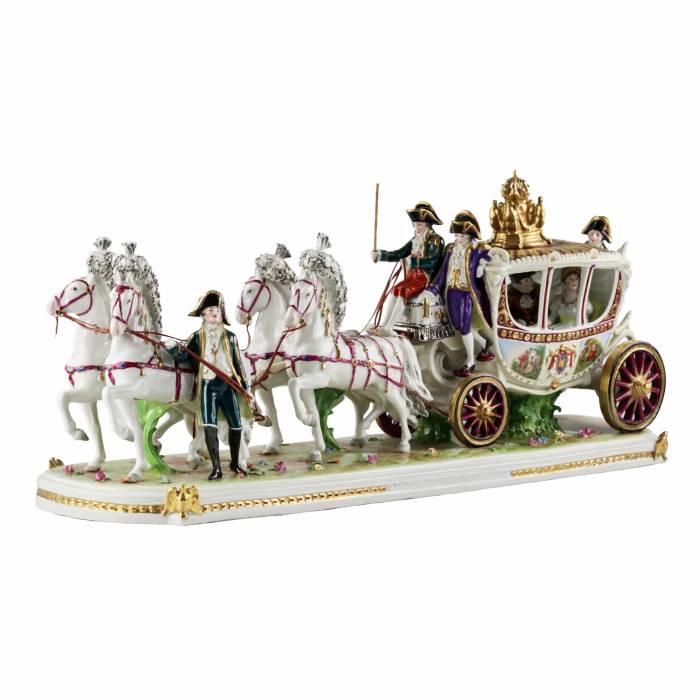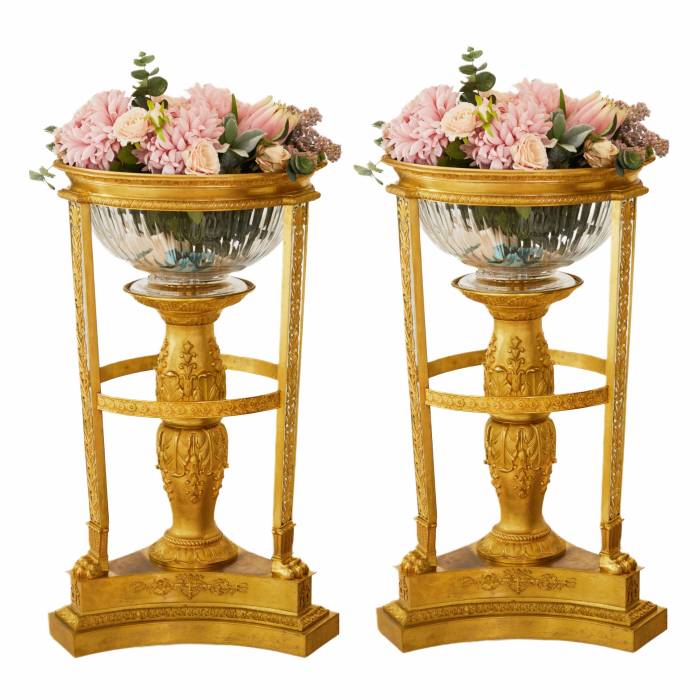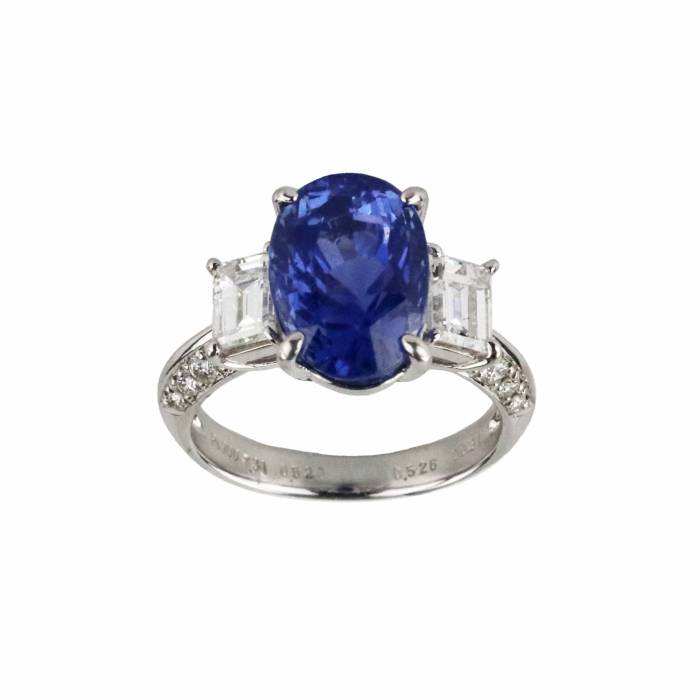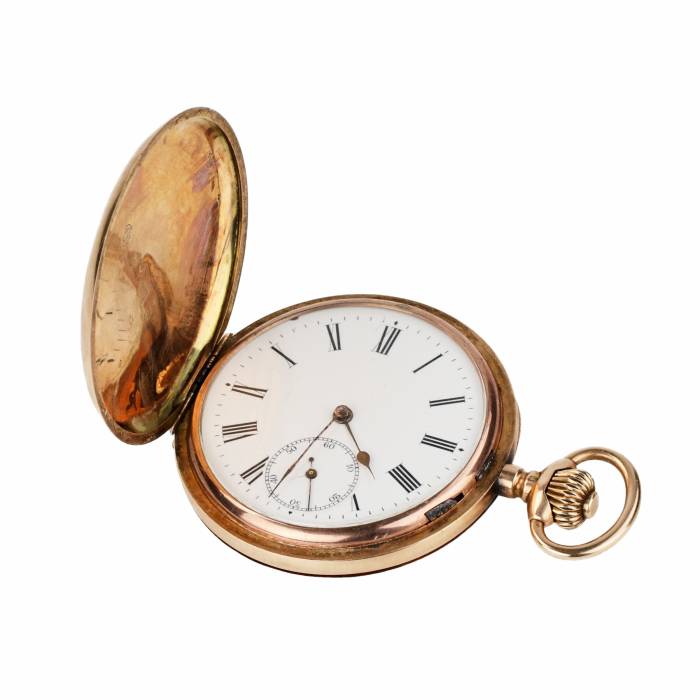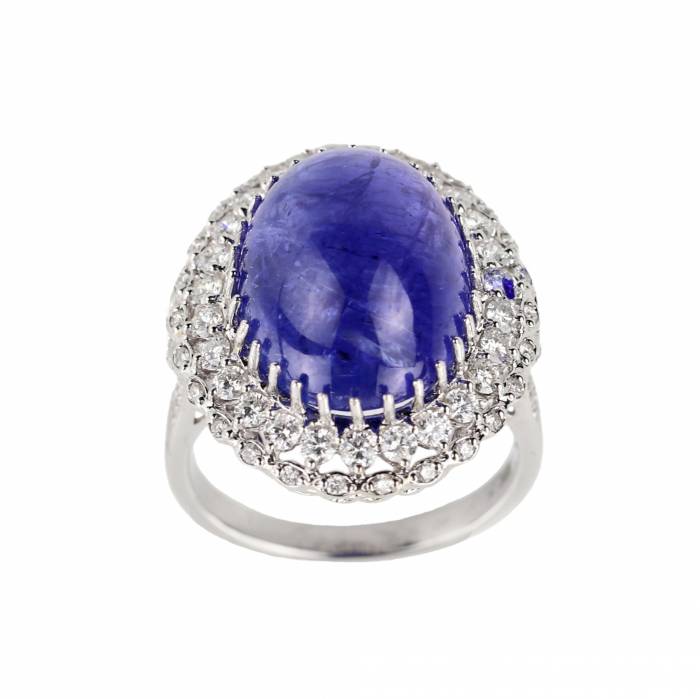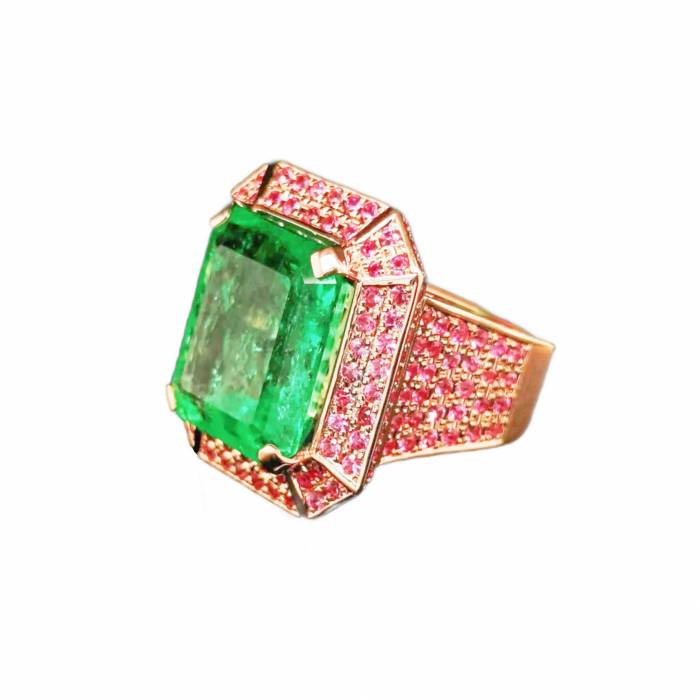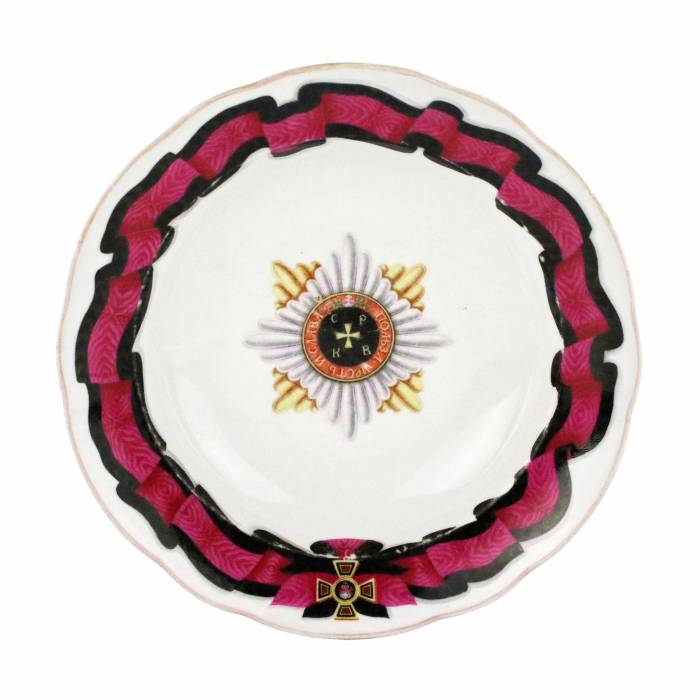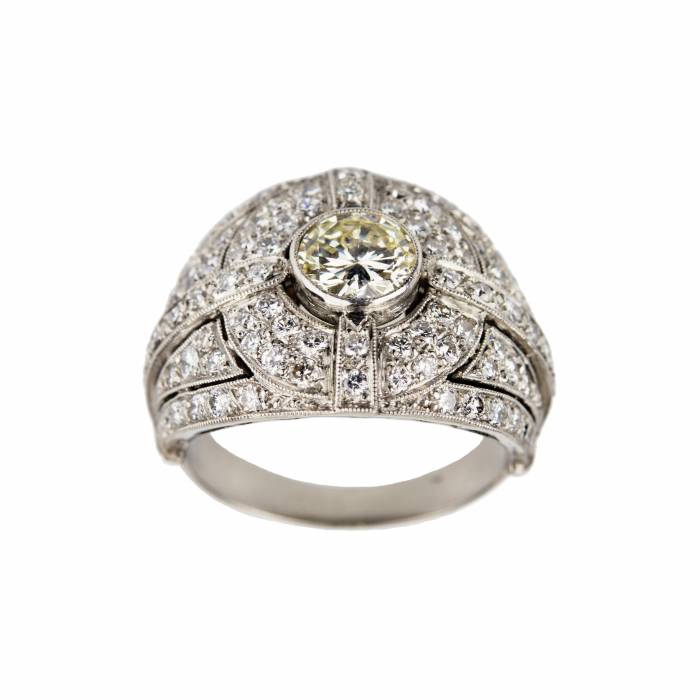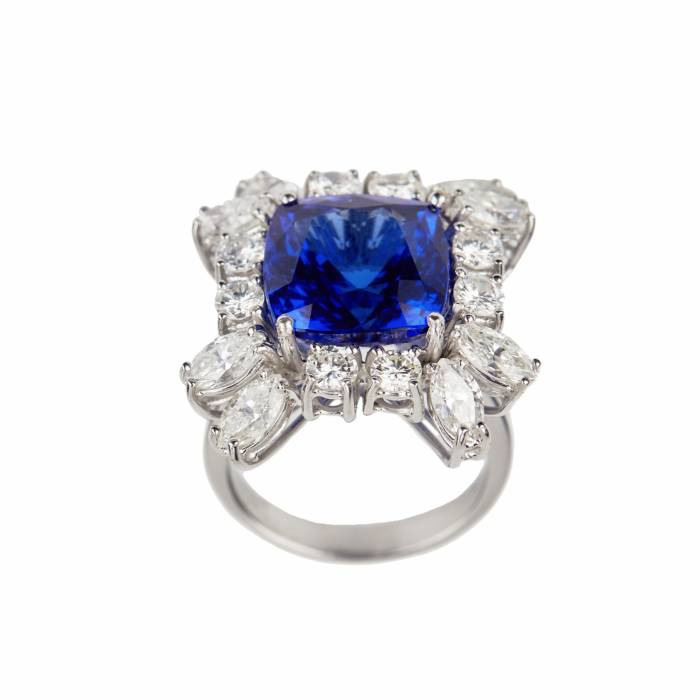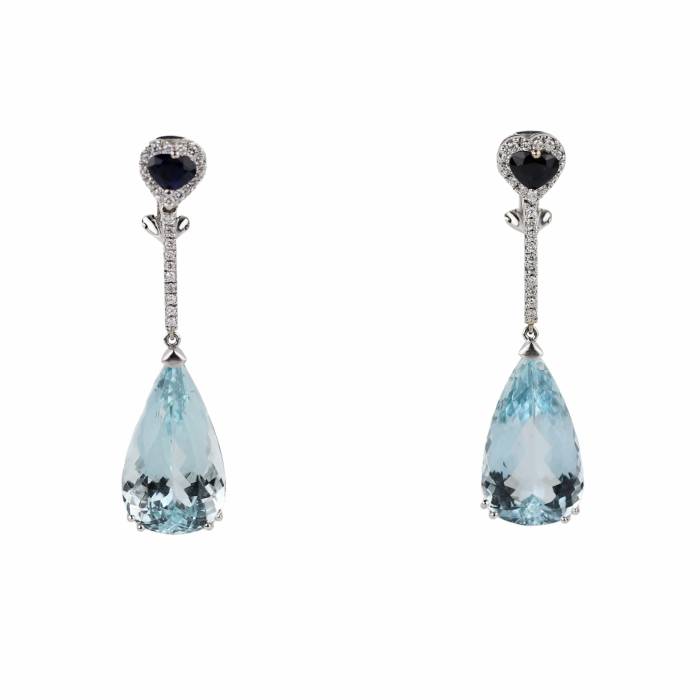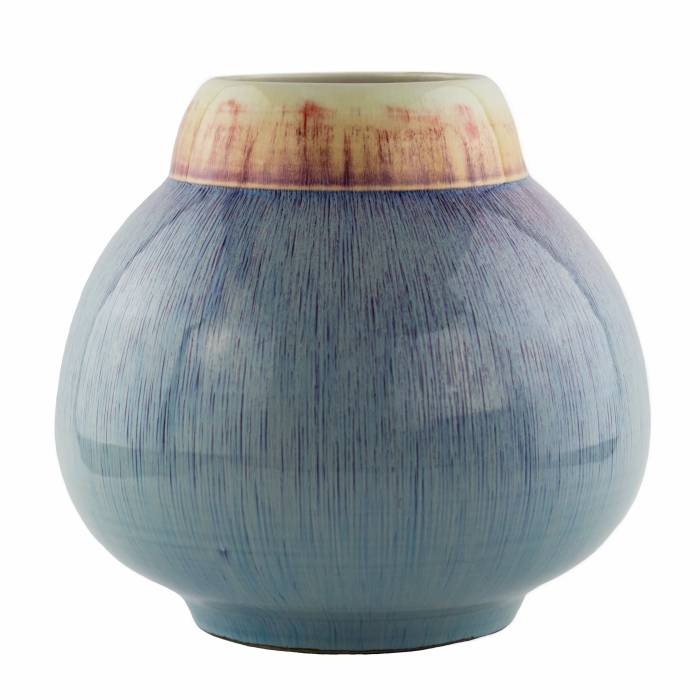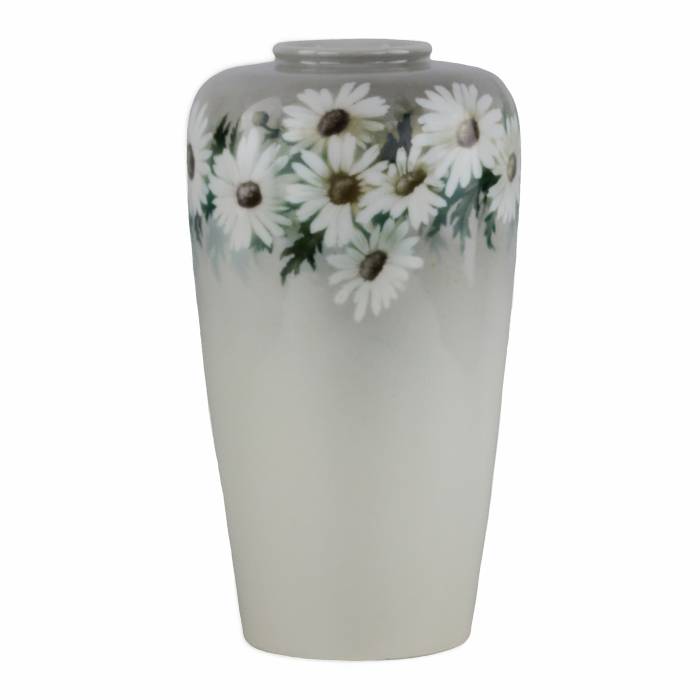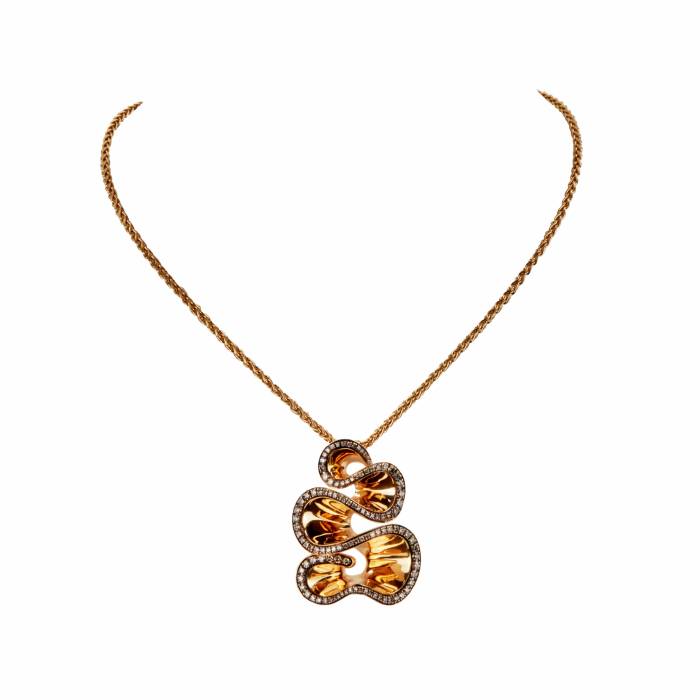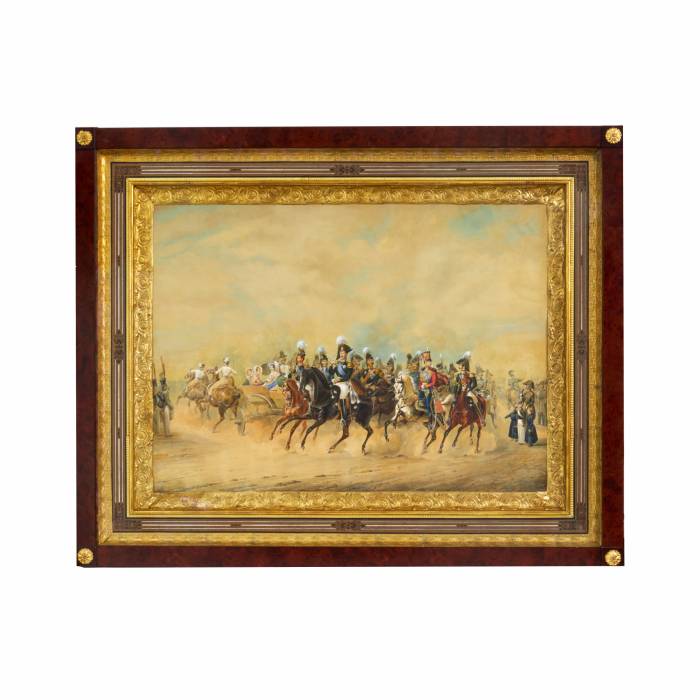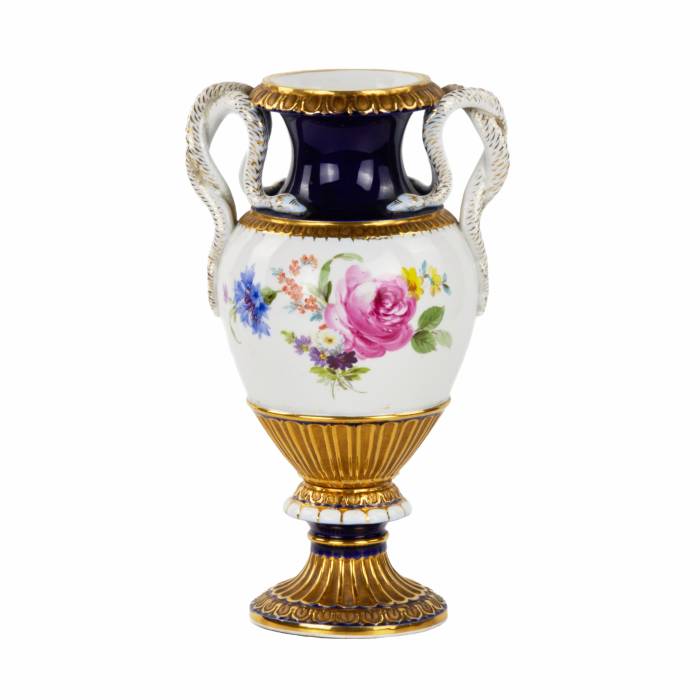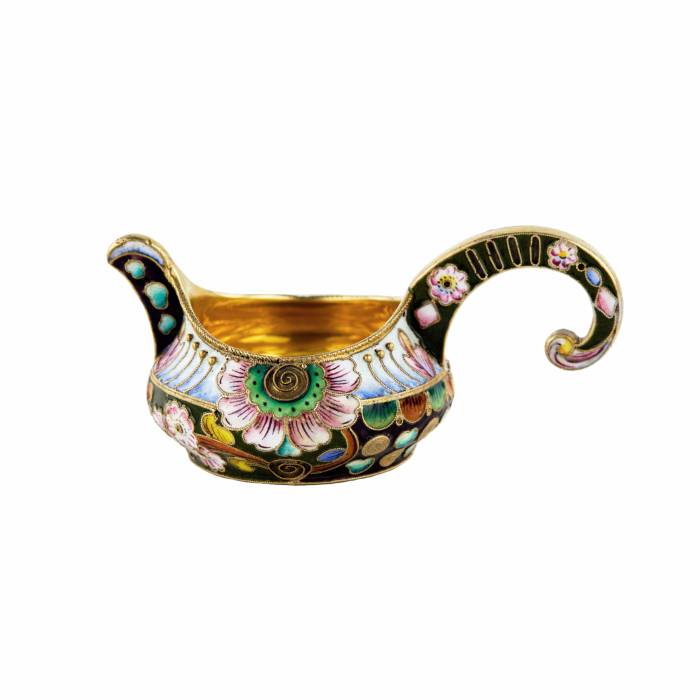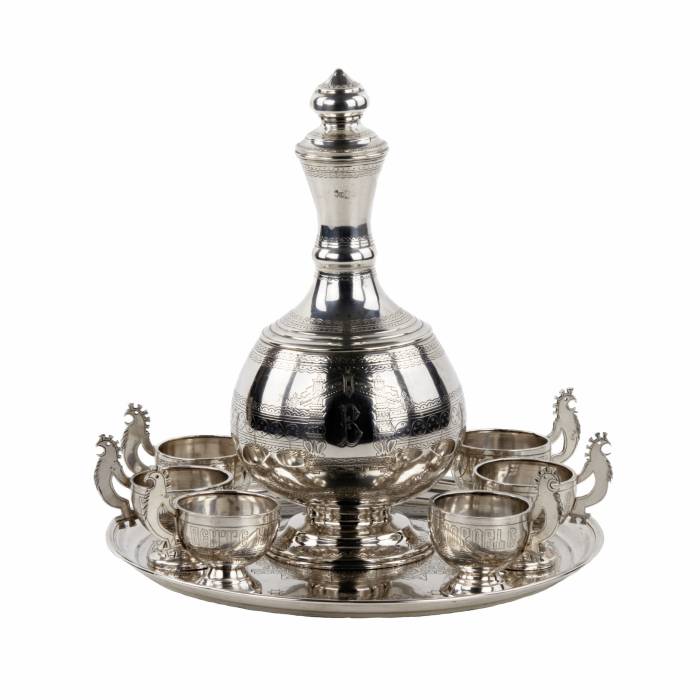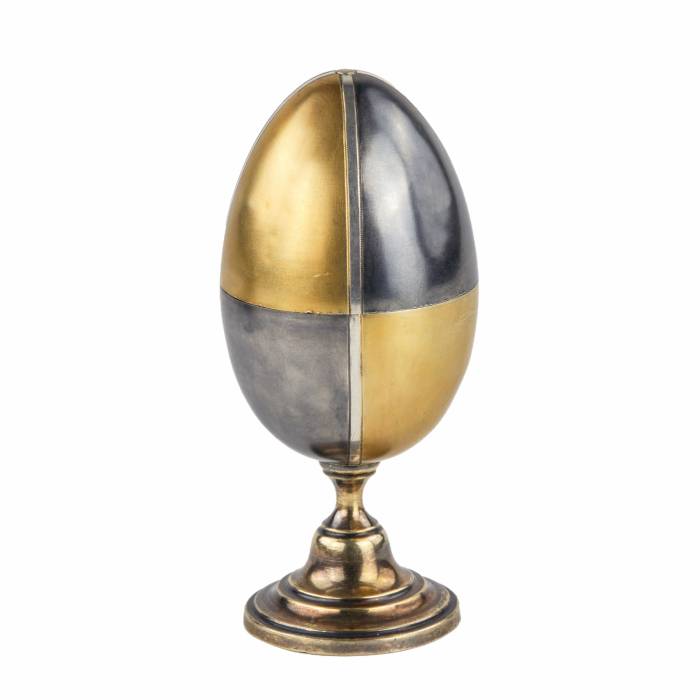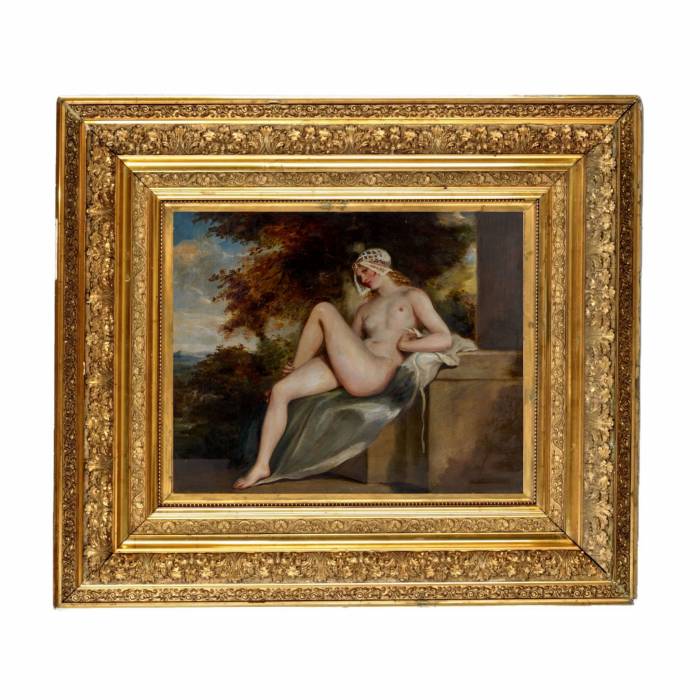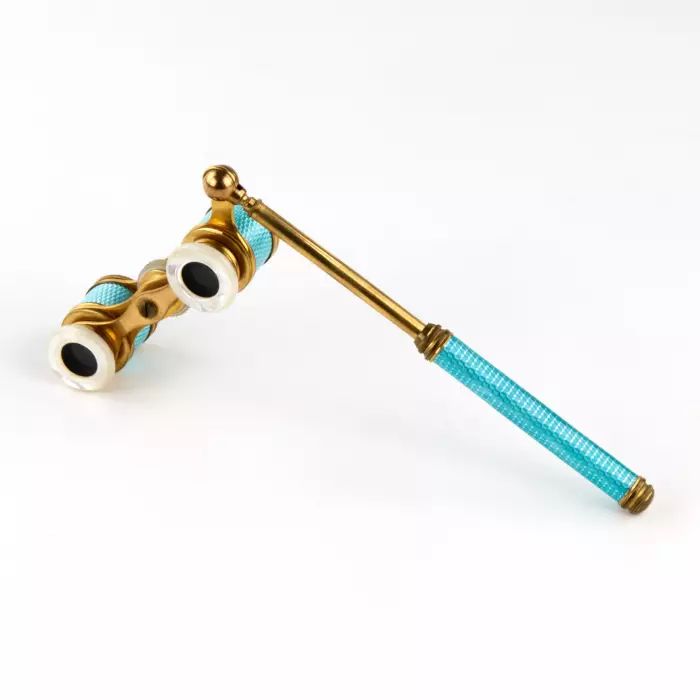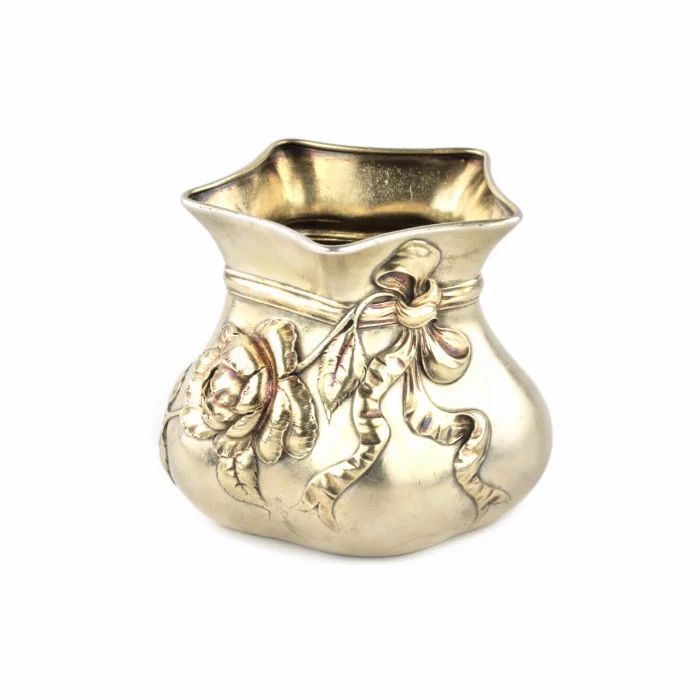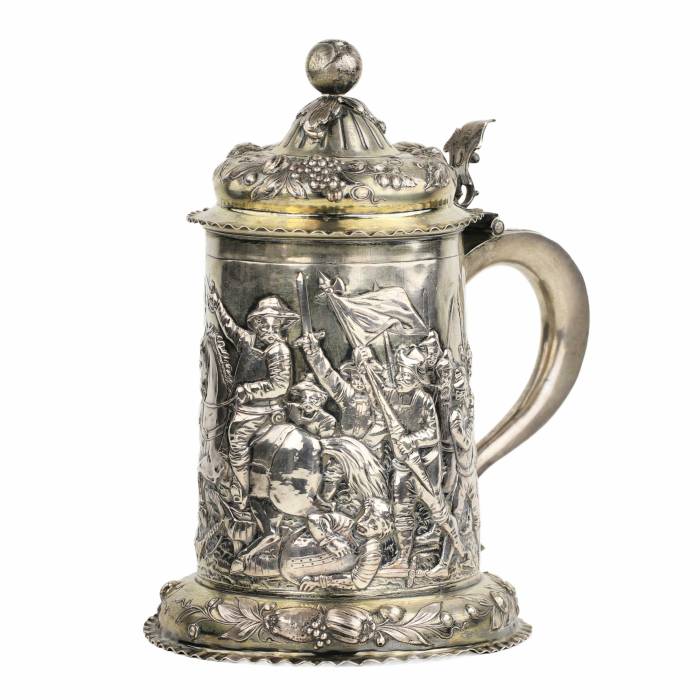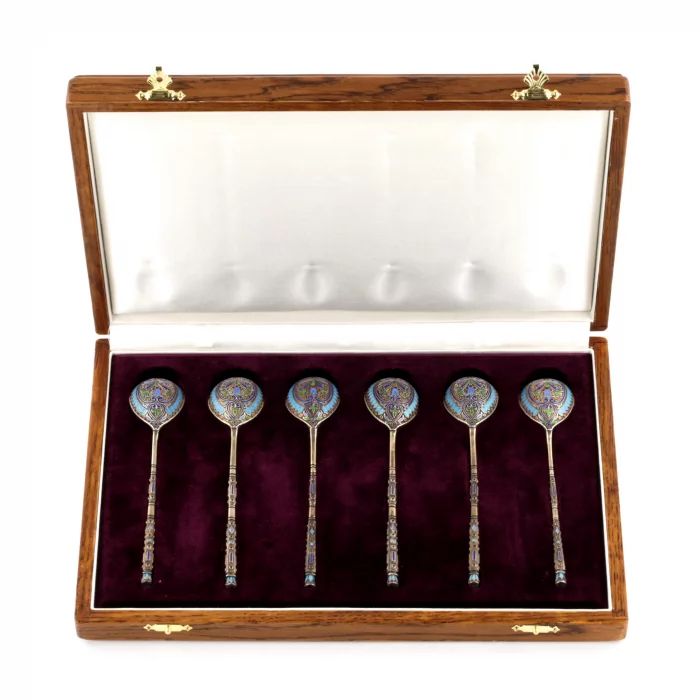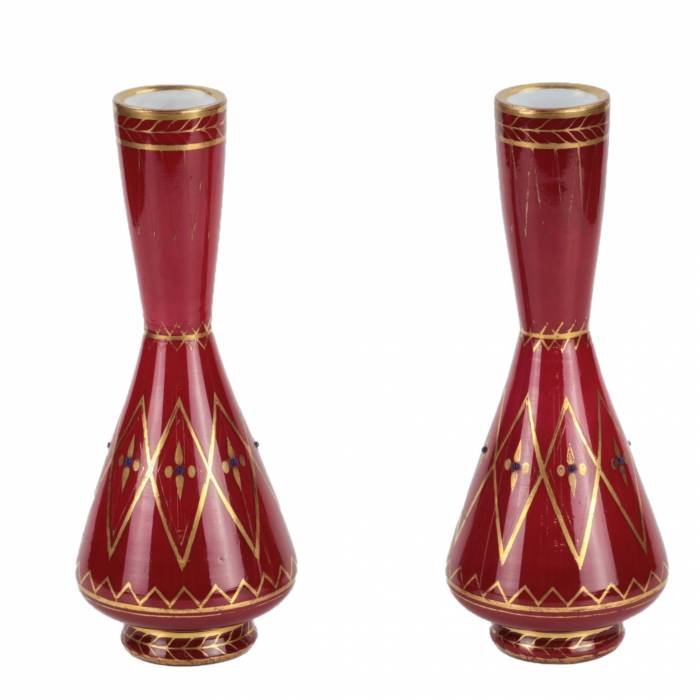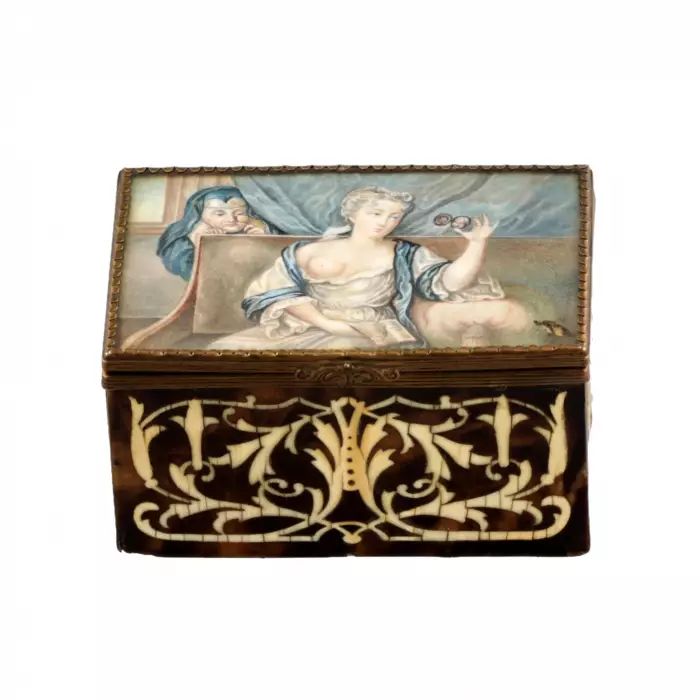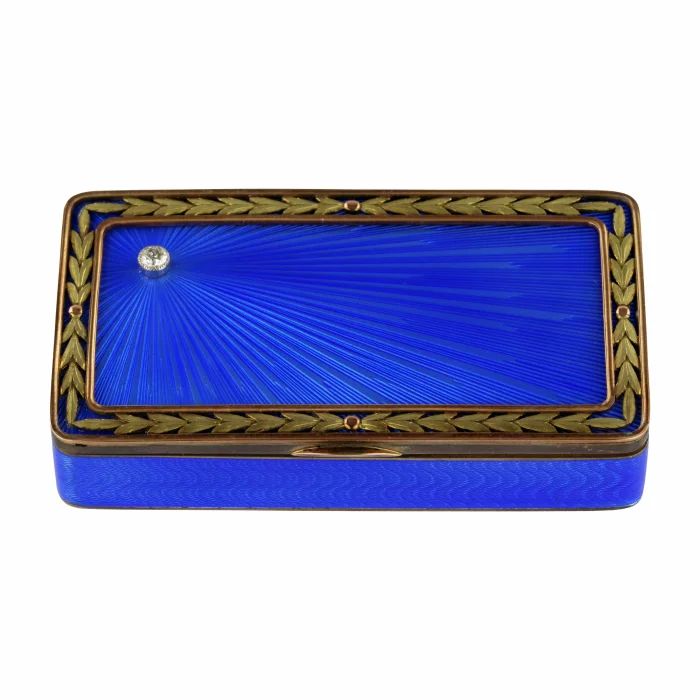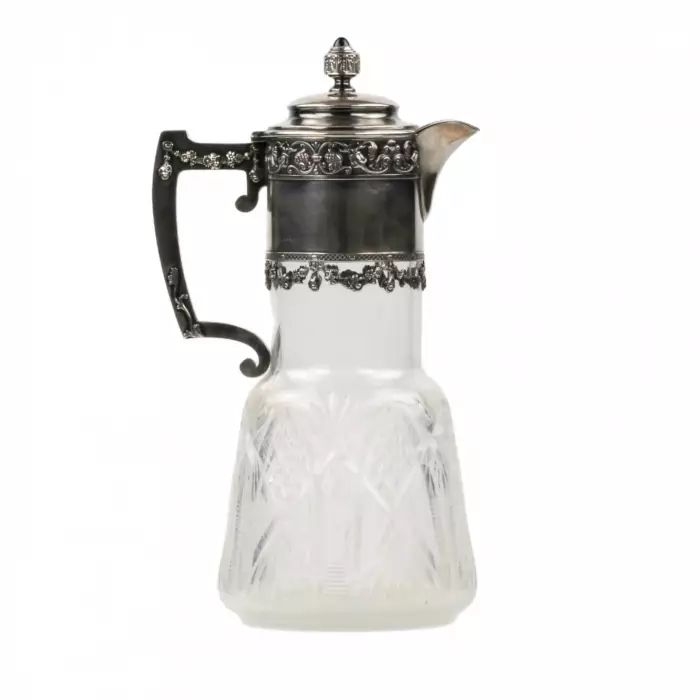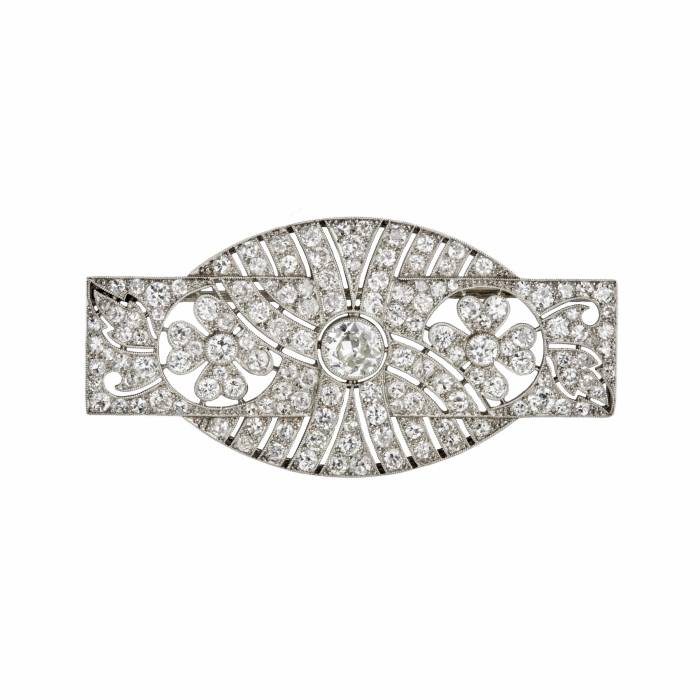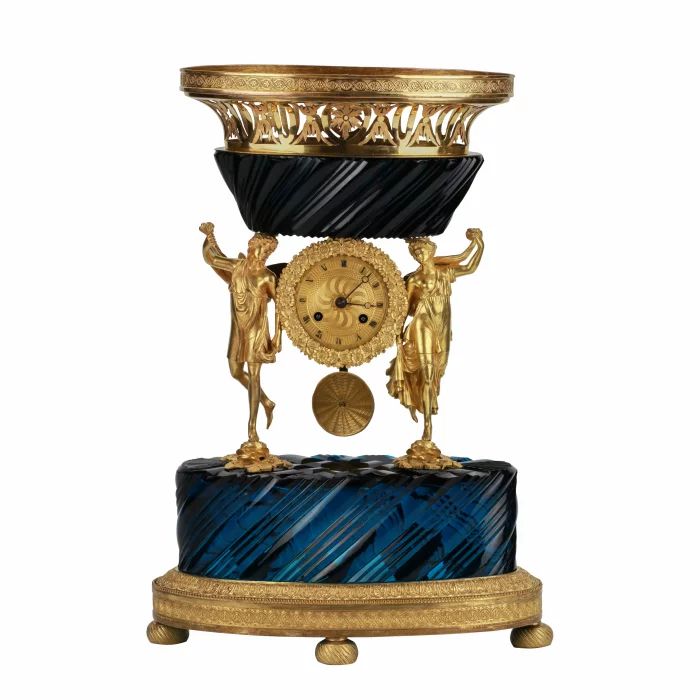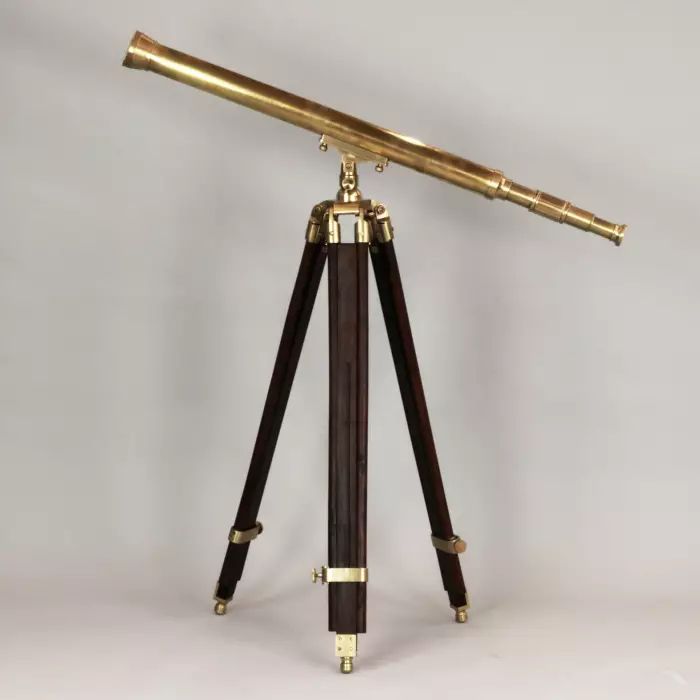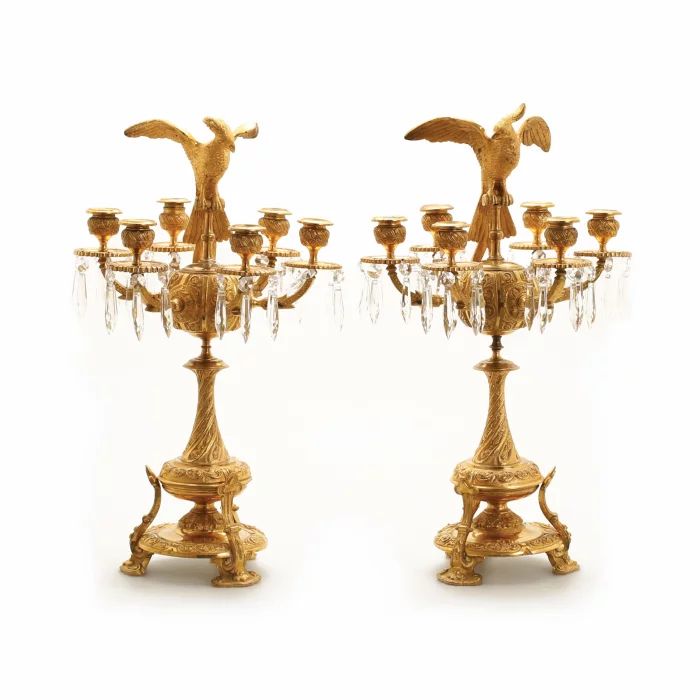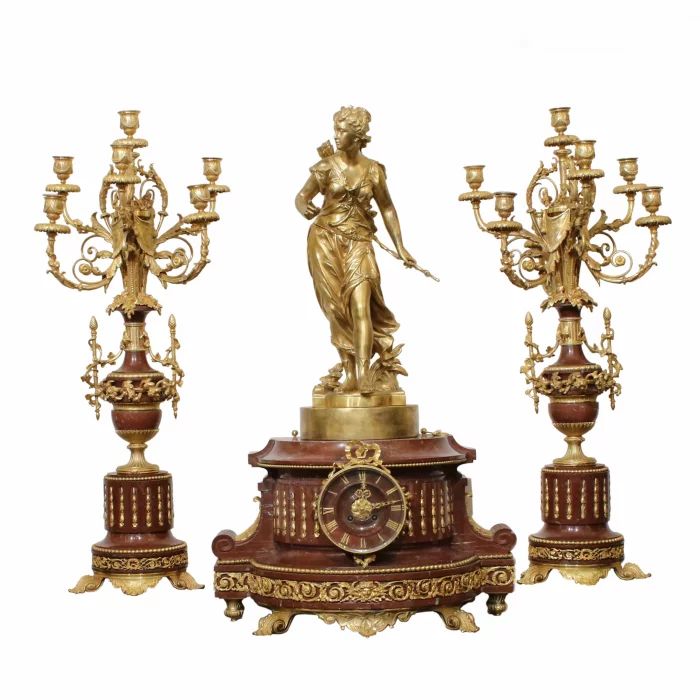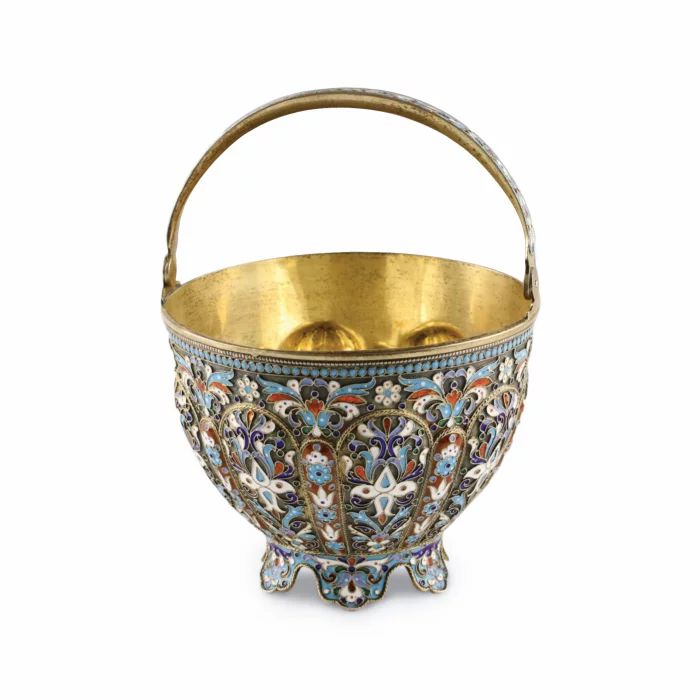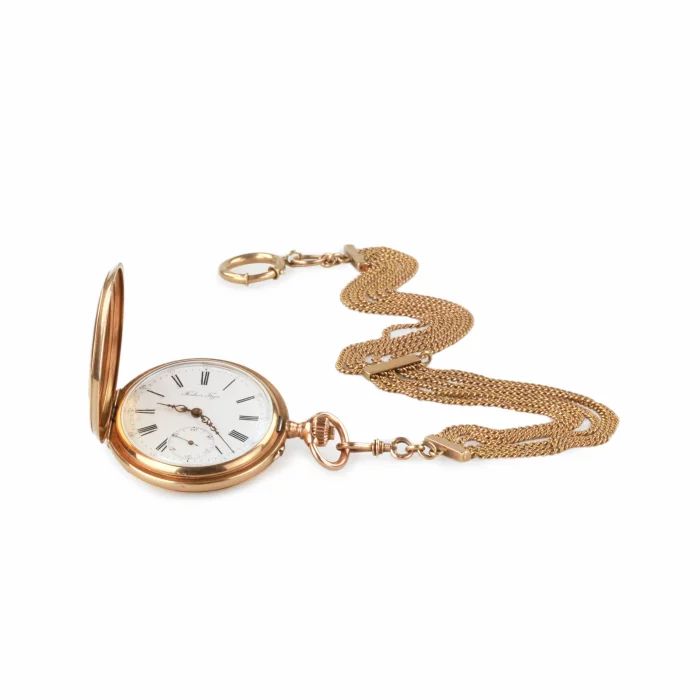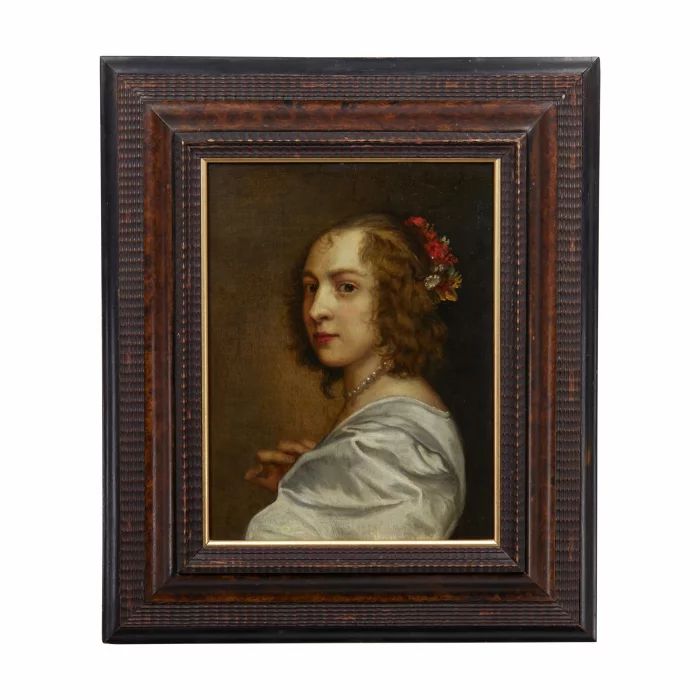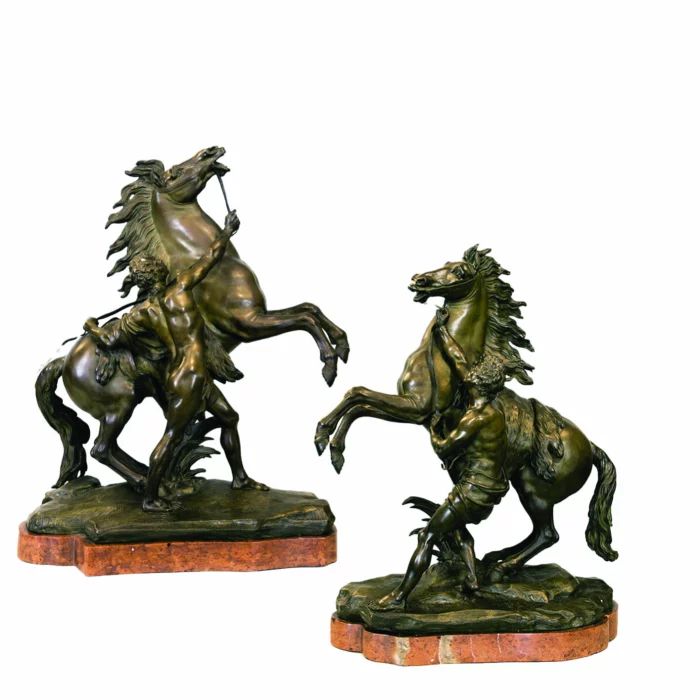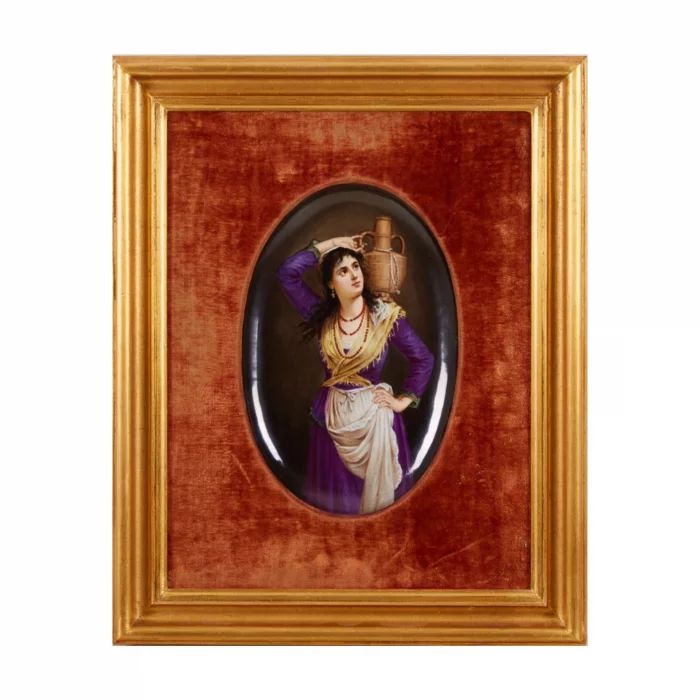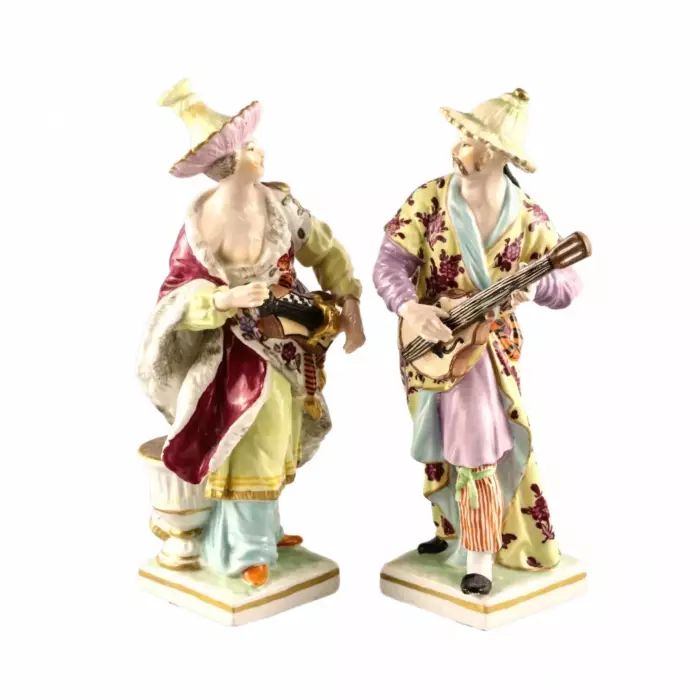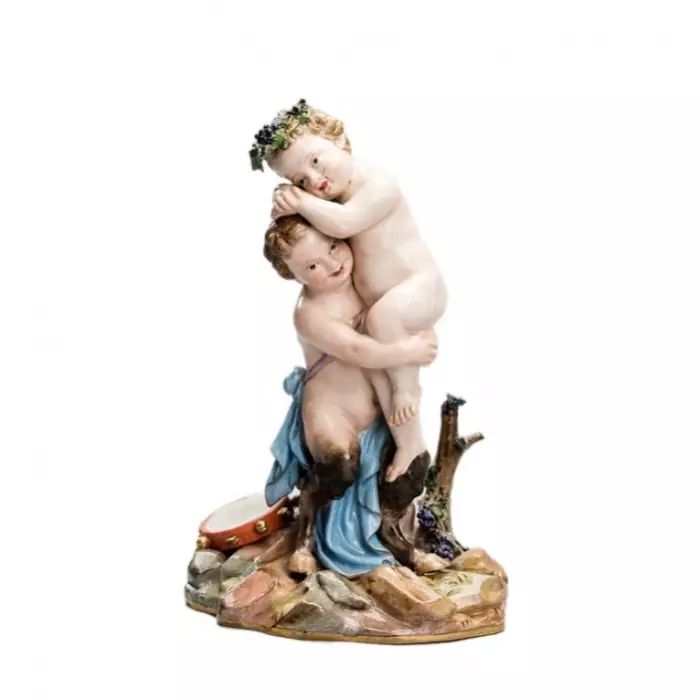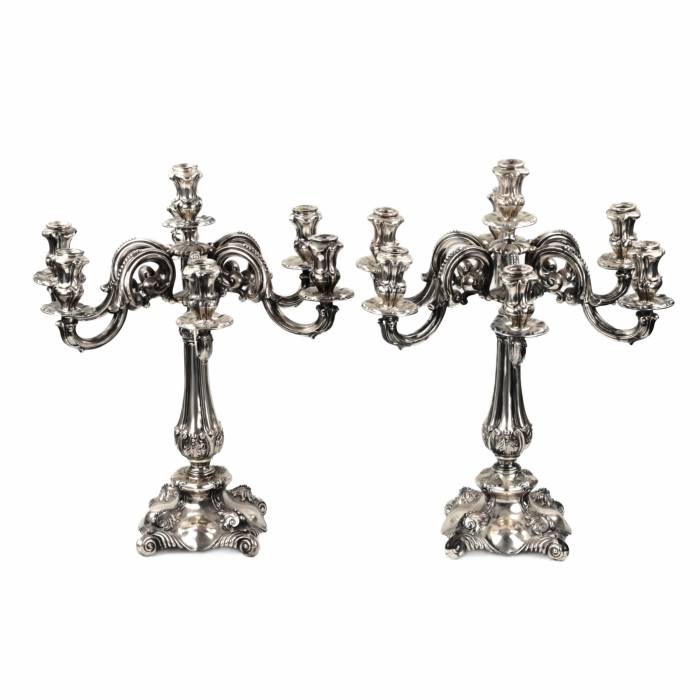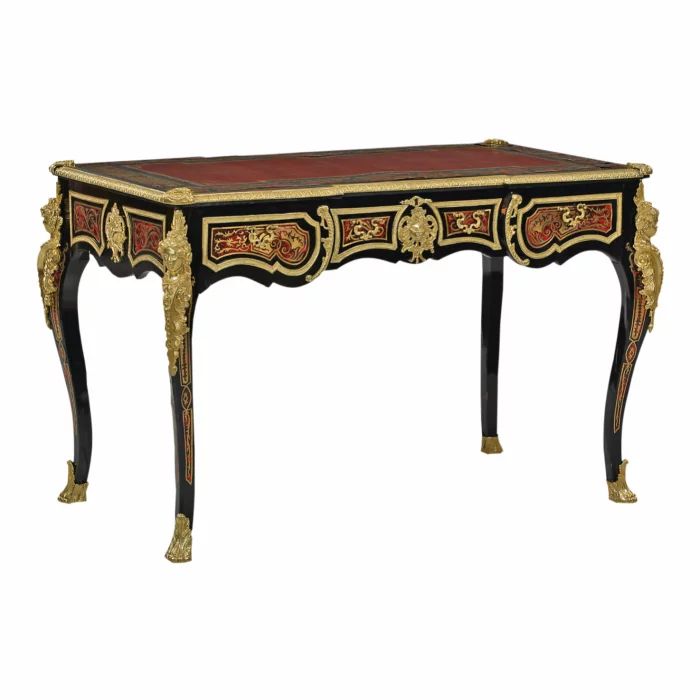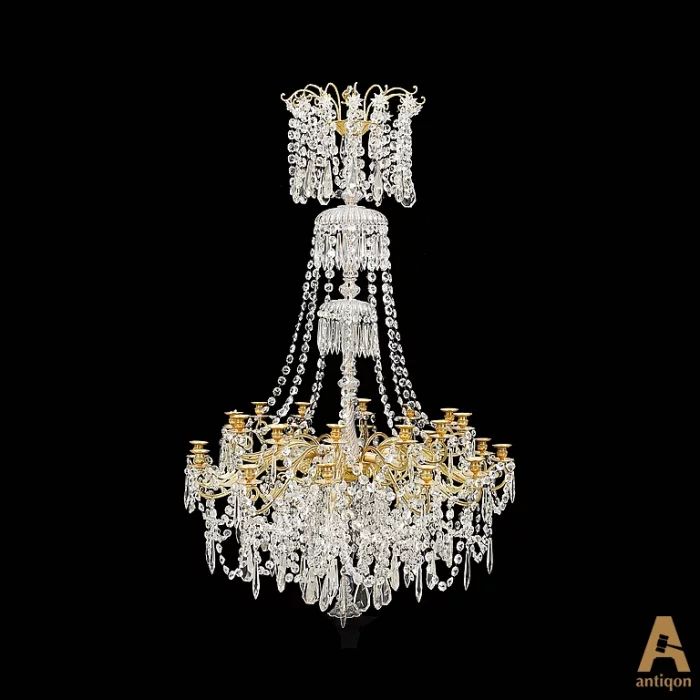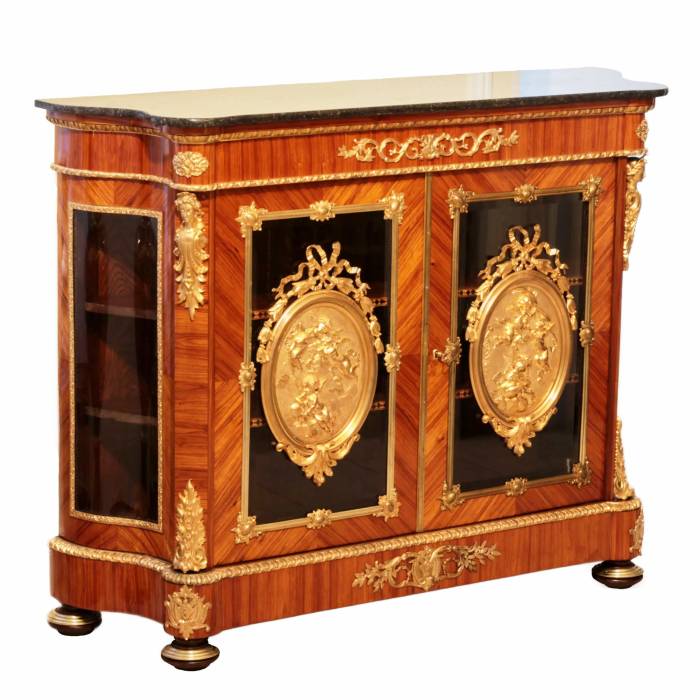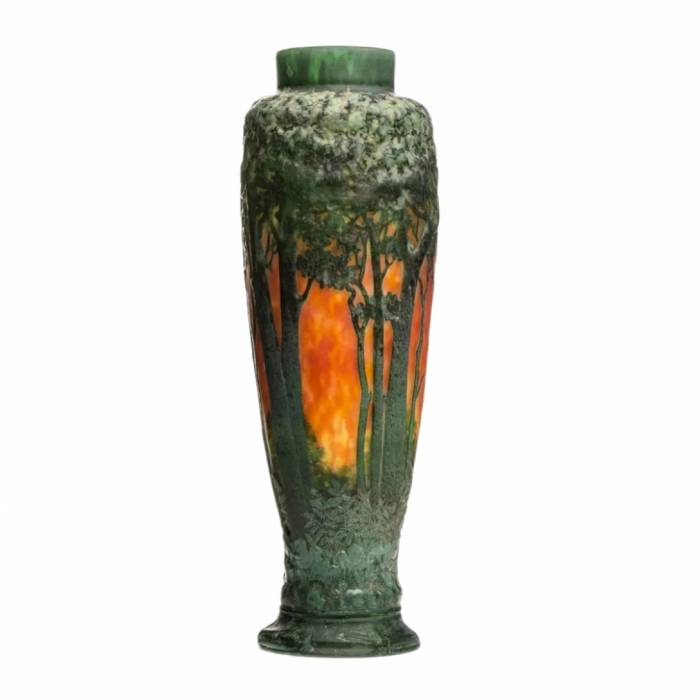A rare and exquisite example of Russian glassmaking from the era of Nicholas I, created by the masters of the Imperial Glass Factory. The vase is made of transparent colorless glass with an internal golden ruby color, achieving the depth of color due to the unique technology of coloring the glass mass with gold nanoparticles. The composition of the decor is verified to perfection: the body is decorated with painting in pure gold, executed with filigree precision. The central decoration is a medallion with an image of a basket filled with flowers and berries, enclosed in a frame of stylized laurel branches. This motif, symbolizing fertility and abundance, is complemented by thin plant garlands falling along the edges. The upper edge is decorated with a wide gold border, giving the item solemnity and nobility. Particular attention should be paid to the faceted base, emphasizing the play of light in the depths of the glass and enhancing the effect of precious radiance. Decorative elements on the base are accented with gilded inserts, emphasizing the exquisite plasticity of the form. Dimensions: Height: 12.7 cm. Diameter: 8.5 cm. Condition: In excellent condition, minimal signs of time. Gilding is in excellent condition, without losses.Historical background: Golden Ruby The technique of creating ruby glass goes back centuries, dating back to the late antique period. However, it was only in the 17th century that the German alchemist Johann Kunkel managed to develop a scientifically sound recipe that made it possible to consistently obtain a rich blood-red shade of glass. In Russia, the first to master the technology of coloring glass mass with gold nanoparticles was the great scientist Mikhail Lomonosov, thereby laying the foundations for the domestic production of ruby glass. By the beginning of the 19th century, the Imperial Glass Factory had reached the highest level of skill in working with this rare and complex technique. Fine ruby glass items decorated with gilded painting were considered objects of the highest prestige. They adorned the state rooms of imperial residences, becoming the embodiment of impeccable taste, refined style and outstanding artistic value.
Country:
Russia, St. Petersburg


